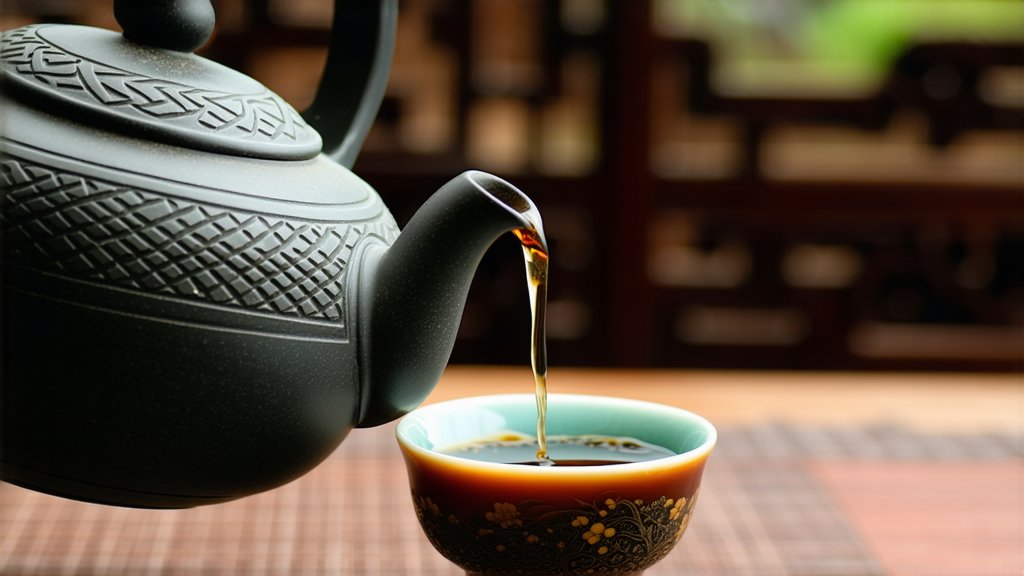
Pu-erh tea, hailing from the Yunnan province in China, stands as one of the most intriguing varieties within the vast spectrum of Chinese black teas. With its deep roots embedded in history and a production process that is both an art and science, Pu-erh has captivated tea enthusiasts around the globe for centuries. This article delves into the rich heritage, diverse varieties, intricate crafting methods, and nuanced appreciation of this exceptional tea.
Historical Background
The origins of Pu-erh tea can be traced back to the ancient caravan routes that traversed the mountainous regions of southwestern China. The tea was named after the city of Pu'er, which became a significant trading hub for the tea produced in the surrounding areas. Initially, Pu-erh was created through a process known as post-fermentation, where green tea leaves were piled together to ferment and age naturally over time. This method allowed the tea to develop its distinctive flavor profile and longevity, making it highly prized among Chinese nobility.
Varieties of Pu-erh Tea
Pu-erh tea is broadly categorized into two types: raw (Sheng) and ripe (Shou). Each type undergoes a different fermentation process, resulting in distinct characteristics and aging potentials.
-
Raw Pu-erh (Sheng): This variety is made from sun-dried green tea leaves that are then compressed into various shapes such as cakes, bricks, or pu-erh balls. Unlike other black teas, raw Pu-erh continues to ferment and mature over time, much like fine wine. The aging process can span decades, with each year imparting more complexity and depth to the tea's flavor.
-
Ripe Pu-erh (Shou): Ripe Pu-erh undergoes a controlled fermentation process known as "wet piling," where the tea leaves are piled up and kept in a humid environment to accelerate fermentation. This method results in a mellower, earthier taste compared to raw Pu-erh and allows for quicker aging, making it more approachable for newcomers to the world of Pu-erh tea.
Crafting the Perfect Cup
The production of Pu-erh tea is an intricate process that involves several stages, from leaf selection to final aging. Here’s an overview of how this remarkable tea comes to life:
-
Leaf Selection: High-quality tea leaves are harvested from ancient tea trees, often found in the wild or cultivated in traditional gardens. The leaves are carefully picked, ensuring only the finest parts are selected.
-
Withering: Freshly picked leaves are spread out to wilt under natural conditions. This step reduces moisture content and prepares the leaves for further processing.
-
Fixation: The withered leaves are then subjected to heat treatment to halt oxidation. This step is crucial for preserving the freshness and aroma of the tea.
-
Rolling: The fixed leaves are rolled to release their juices and shape them into tight rolls. This process helps in better fermentation and extraction of flavors during brewing.
-
Fermentation: For raw Pu-erh, the leaves are left to dry and naturally ferment over time. In contrast, ripe Pu-erh undergoes a wet piling process where the leaves are moistened and piled up to ferment quickly under controlled conditions.
-
Aging: After fermentation, both types of Pu-erh are stored in a cool, dry place to age. The aging process enhances the tea’s flavor and texture, making it smoother and more refined over time.
Appreciating Pu-erh Tea
To truly appreciate Pu-erh tea, one must engage in mindful tasting and observation. Here’s a guide to savoring this exquisite beverage:
-
Preparation: Use a gaiwan or a Yixing teapot for brewing Pu-erh tea. Boil water to the appropriate temperature—around 95°C (203°F) for raw Pu-erh and slightly cooler for ripe Pu-erh. Rinse the tea leaves briefly with hot water to awaken their flavors.
-
First Infusion: Steep the tea for about 5-10 seconds for the initial infusion. Observe the color and clarity of the liquor, noting any changes from subsequent infusions.
-
Subsequent Infusions: Gradually increase steeping time for each infusion, typically by 5-10 seconds. Pu-erh tea can be brewed multiple times, revealing different layers of flavor with each steep.
-
Aroma: Inhale deeply to detect the tea’s fragrance. Raw Pu-erh often exudes floral and earthy notes, while ripe Pu-erh offers a more pronounced woody and mellow aroma.
-
Flavor: Sip slowly, allowing the tea to coat your palate. Pay attention to the balance between sweetness, bitterness, and astringency. Note how these elements evolve with each infusion.
-
Aftertaste: Experience the lingering aftertaste, which should be smooth and pleasant, leaving a lasting impression on your taste buds.
Health Benefits
Beyond its cultural significance and delightful taste, Pu-erh tea boasts numerous health benefits. Rich in antioxidants, it aids in reducing inflammation, improving digestion, and boosting metabolism. Regular consumption has been linked to lower cholesterol levels and enhanced cardiovascular health. Moreover, Pu-erh’s probiotic properties support gut health, contributing to overall well-being.
In conclusion, the world of Pu-erh tea is a fascinating journey through history, craftsmanship, and sensory delight. Whether you are a seasoned tea connoisseur or a curious newcomer, exploring the depths of Pu-erh will undoubtedly enrich your appreciation for this timeless elixir. So brew a pot, take a sip, and let the ancient wisdom of Pu-erh tea unfold before you.